How to Find New Content Ideas: An Ultimate Guide
The biggest challenge of being a content marketer is finding out what your audience likes. But the question is, is that a one-time job? The audience’s tastes are known to change faster than anything else!
So, what is the solution? Well, we’ve got to keep up and constantly find content ideas on what we can offer them. It is the only way to stay ahead of the competition and stand out from the crowd.
Before you even think about your heading, content, visuals, etc. you need the right ideas. You need content marketing ideas that don’t just convert, but also save you time and money. You need to have a strategy in place. It has to be researched, well-thought-out, and planned. So, how do you find these content ideas for blogs, social media, and other platforms? Well, that’s what we’re here for! We’ve found out the best ways on how to find new content ideas for your business.
Ways to Find New Content Ideas for Business
1. Keyword Analysis
The word ‘keyword’ could be the holy grail marketers have been after, possibly since the 13th century.
Okay, maybe we exaggerated a bit there. But it is, indeed, true!
Now, what is a keyword? Why do we analyze it and what makes it so important?
In terms of SEO, keywords are basically words and phrases that searchers use to search for a particular topic on a search engine. Statistics show that 0.16% of the most popular keywords are responsible for 60.67% of all searches. In simple terms, a keyword is the language of your users and you need to speak it. (Enter: Keyword Analysis)
Keyword Analysis is the process of researching keywords relevant to your content. The primary objective of keyword analysis is to measure the search volume, ranking, and competition for a particular keyword. You can develop various versions of a single keyword in order to do so.
For example, imagine that you want to start a blog on ‘getting organized in life”. Now, relevant keywords and their versions could range from ‘getting organized’, ‘life organization’ to ‘how to get organized’, and much more. Trying to rank for multiple keywords almost never works out.
This is why it becomes important for you to pin down one primary keyword. During this research process, you realize what your users are actually searching for and basically what’s available in the market. These are qualified customers actively searching for products like yours. Hence, this process will help you create content ideas for your future blogs. And what’s better is that you are confident that this is the content that users are already asking for.
There are tons of tools today that help you with keyword research. You can take a look at tools like Buzzsumo and Ahrefs to simplify the process.
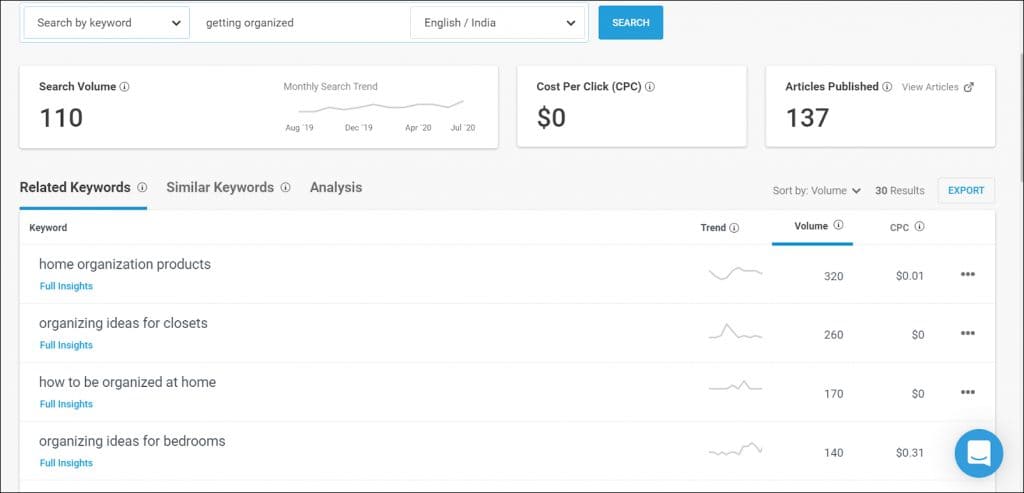
2. Identify Trends
Well, most of us can’t even remember what we had for lunch the day before, let alone out-dated trends. No matter who you are, you need to keep up with the latest trends in your industry. Whether you’re a chef, a fashion designer, or a marketer, you should offer your customers the most relevant information. If you don’t adapt, you’re going to be left behind (look at us quoting Darwin like a pro).
Research is a continuous process and the only way for you to keep up with the news. Keep checking out marketing influencers and take note of what they’re talking about. Look out for industry research reports and blogs all the time. Follow the right people and pages on social media. The newest hashtag or the latest tool – everything matters.
Take the world of content marketing as an example! The world has moved on from product-centric Mad Men marketing. Marketing strategies have become more inbound and aim to add value to consumers. Social media, user-generated content, and interactive content are the things of today. And any content marketer that does not allow room for change, will soon become redundant.
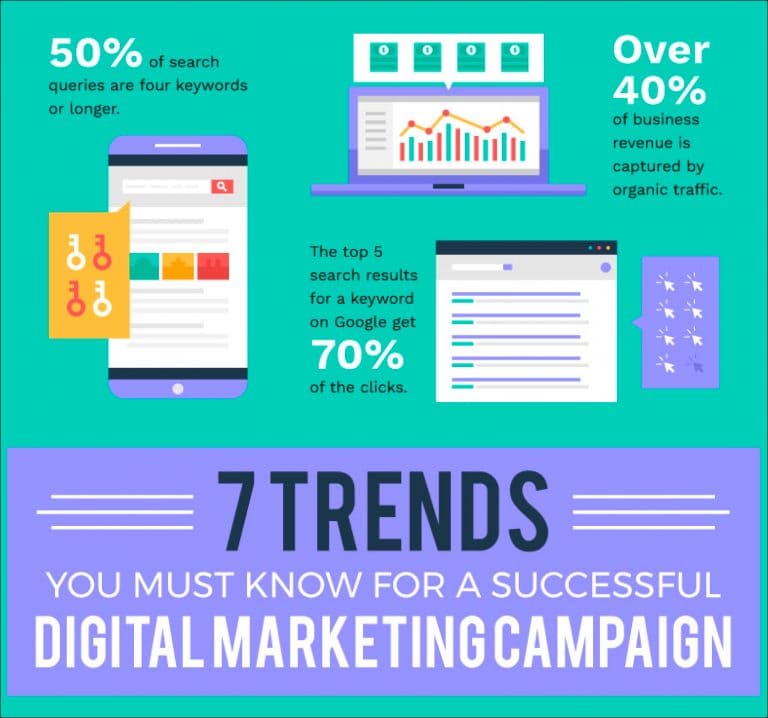
Source
3. Use Your Analytics
There’s no point shooting blanks in the dark. Any good content marketing strategy starts with goals. They can range from your blog views to your click-through rates. And to keep track of those goals, you need to measure your numbers. There are tools like Google Analytics that help you understand how your content is performing – which post gets opened the most, which gets read the most, and which gets shared the most. This helps you understand what your consumers expect from you and what they consider ‘useful’.
You tried something new and it didn’t work out. That’s okay – focus on what did work out and expand on that. Imagine that you’re a fashion blogger. You create two blogs – one long-form post on polka dot patterns and one on the top 10 summer outfits for the year. The latter got shares and views from all around the social media and on your website. And the former blog, not so much. You can use this information to create more listicles and recommendations instead of long-form posts. You can even try videos, podcasts, interviews, and much more.
Find out what works for you and develop that instead of running after something that gives no return. Your analytics can help you develop a stronger strategy and also concentrate on the kind of ideas you should pursue in the future. You can also use A/B testing to identify the kind of visuals, designs, and structures that work better in the market!
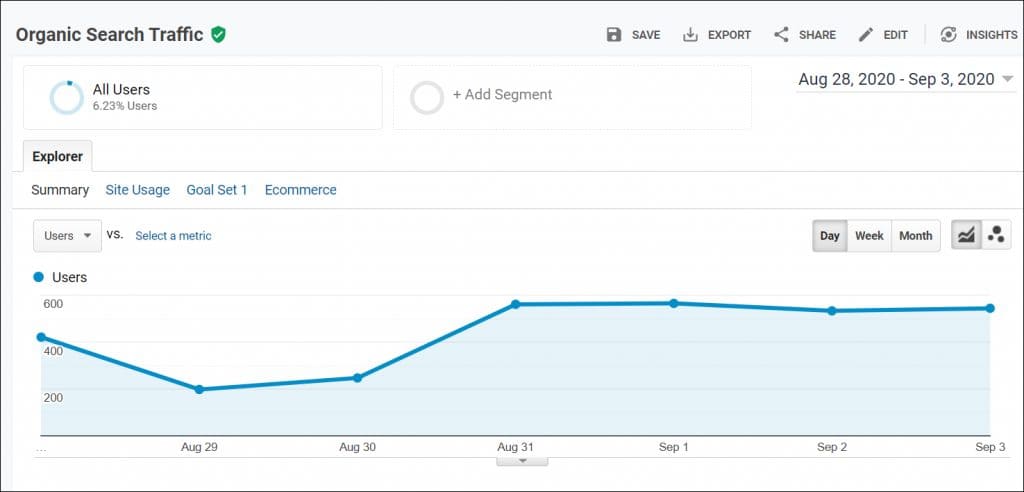
4. Learn From Your Competitor
Your competitors have an entire pool of content that is relevant to your audience. But are we telling you to steal? Definitely not, no one likes a thief. However, you can keep track of what they’re writing about, the kind of content they’re using, who they’re talking to, etc. You can use this content to understand which direction you can explore and what you can adapt to suit your own style of writing. It helps you understand where you lack and recognize your strengths too.
The best example to understand this love-hate relationship with your competitor is to look at the marketing strategies of McDonald’s and Burger King. While both these brands are distinct in many ways, they aim at the same product – fast food, and especially burgers. Both of these famous brands have had a history of taking a friendly jibe at one another in the most creative of ways.
What could be a bigger proof?

5. Idea Generators
While everybody was still figuring out ways to find content ideas, someone went ahead and made content idea tools for them! Idea generators are tools that offer you content ideas on different parameters and make your job really really easy (you still gotta do that research, though). We found two idea generators – one by Outgrow and the other by Hubspot.
Outgrow, an interactive content creation company has its own idea generator. It offers you interactive content ideas depending upon the industry you belong to. You can create lots of calculators, quizzes, chatbots, surveys, and more from this list. It even gives you live industry examples so that you can get an idea of how to build and use similar content experiences.
The second generator is by Hubspot, a CRM company. It allows you to input up to 5 keywords and tries to give you 5 closest blog ideas. These results can end up being a great inspiration for you and give you ideas even for your future content.
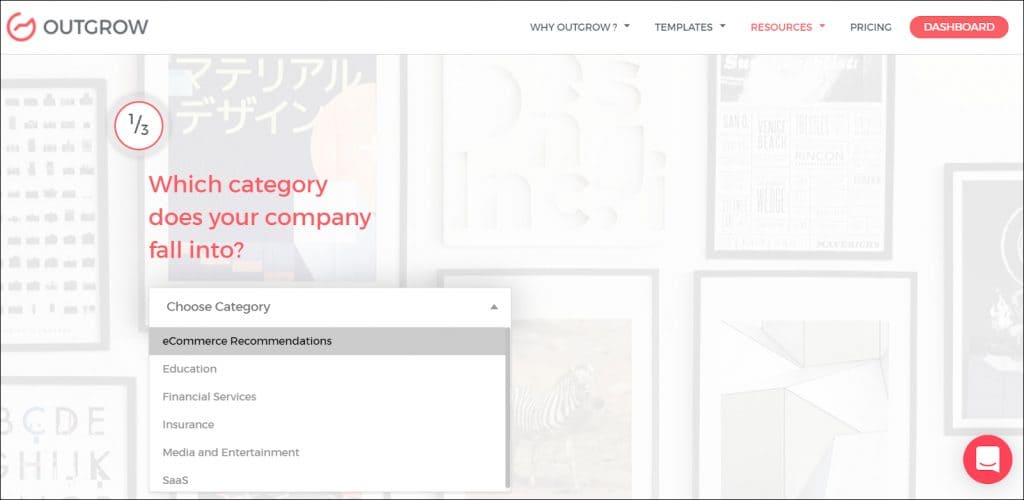
6. Align With Your Sales and CS Teams
Once you’ve done your job, it becomes the task of the sales company to bring a customer home. They’re the people who interact with your customers once they’ve shown an interest in your product. And post that they pass the baton to the CS team. Therefore, it becomes very important for a marketer to align with these teams and find out what customers are actually asking for. You don’t want to keep pushing a certain feature in your blogs only to find out that it’s not that interesting to customers.
But you can ask the sales and CS teams to find out what customers find interesting about your product. You can find out their biggest pain points through the team. The information can be used to create blogs, support documents, tutorial videos, and much more. You need to talk to your sales and CS teams to understand how you can market your own product in the best way possible.
Now, all consumers may not think alike but ultimately, they want to derive utility from the products they use. So, you can even learn from the existing customers on how to offer better information to potential customers.
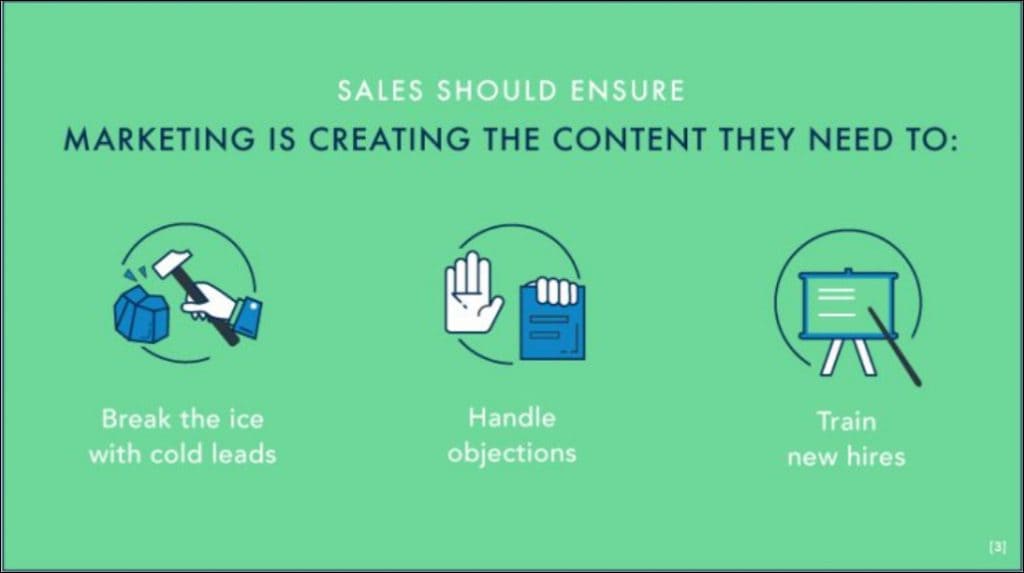
7. Ask Your Audience
Ah, well, who knew it was going to be so simple? Just ask your audience what they want to read about! You can interact with your audience on social media, on your website, or through newsletters. Moreover, you can simply ask them what they want to read about through a Twitter/Facebook poll or in the comments section on Instagram. You can also allow them to comment on your blog posts on the website. Embedding surveys on emails is another great way to go about it.
You can also keep track of the kind of content your audience engages with the most on social media. Here’s an example of a Twitter poll by Buffer on what kind of content they should post more.
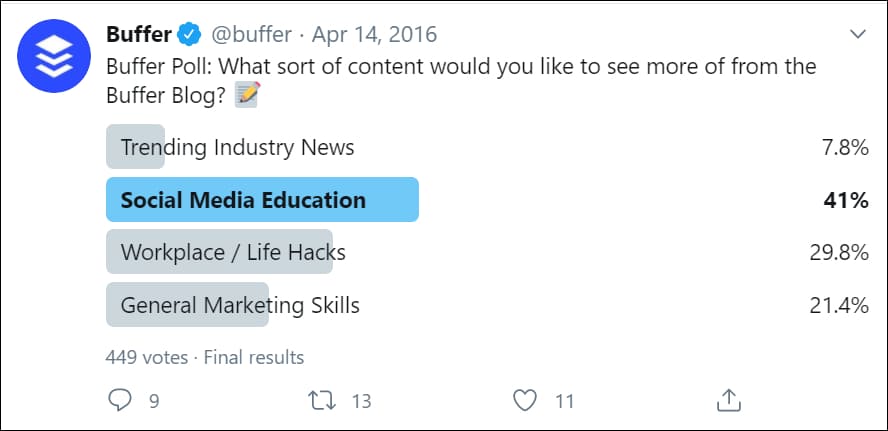
8. Surveys and Polls
Have trouble figuring out what your customers want to see? Find out what matters to them and what topics they would be interested in learning more about. You can do it with the help of surveys and polls. Using surveys and polls, you can collect, analyze, and interpret information from multiple individuals at once.
It is the best way to get a deeper understanding of how your target audience thinks and perceives things. Different types of surveys would help you with different conclusions and ultimately, help create new content.
9. Newsletter
A newsletter is an email that a company sends to its prospects and customers regularly. This is to keep them up to date about the brand’s products and services, share helpful industry news, and announce discounts and promotional offers.
You can always subscribe to different industry newsletters and keep yourself updated on relevant topics. It is always a good idea to keep an eye on what is being popularly discussed. And sometimes, you can get inspiration for something you can create that your target customers might find useful.
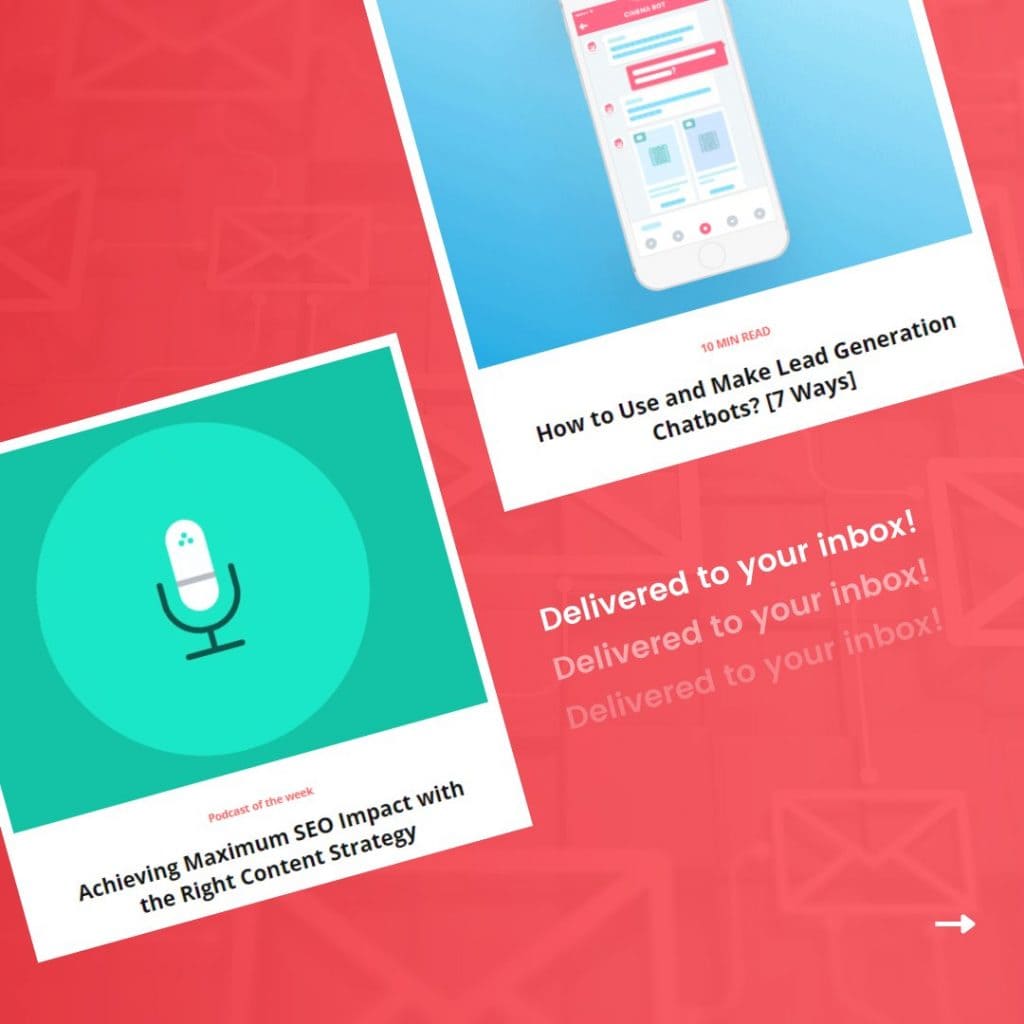
Along with industry newsletters, you can also have a look at competitors’ newsletters or investment newsletters to generate some new content ideas and stay up to date with financial insights.
10. Google’s Search Related to Ideas/Suggestions
Try searching Google for a general topic, and then you can see the suggestions that come.
Take a look at all the suggested topics I get when I type in “interactive content“.
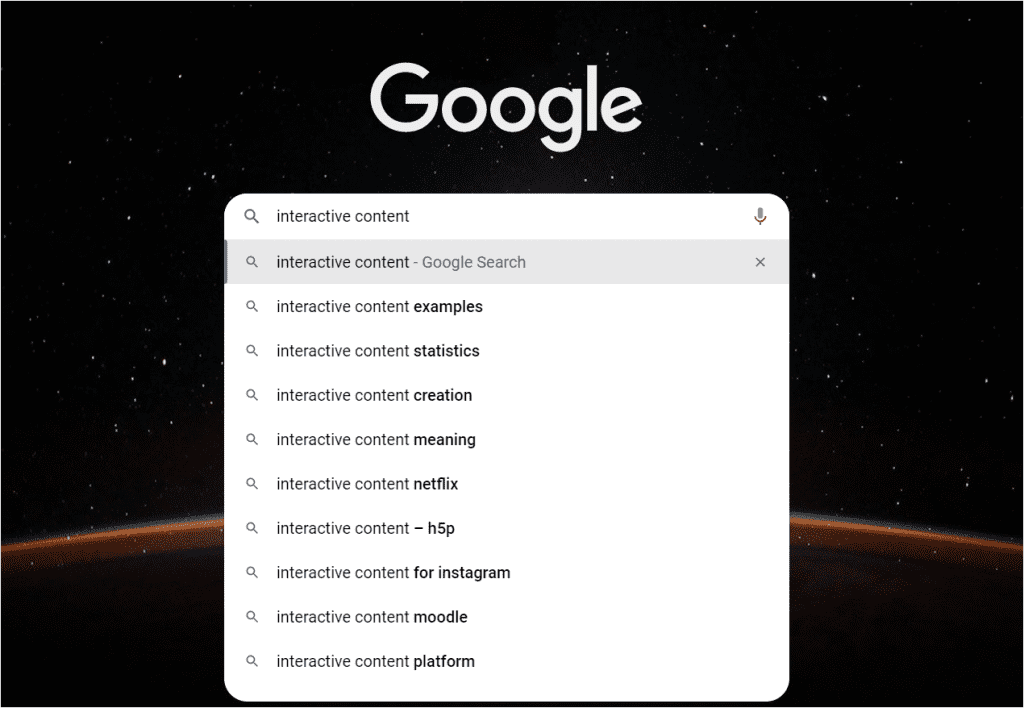
The topics listed here could all be relevant topics to cover, and at the bottom of the page, you will find related searches.
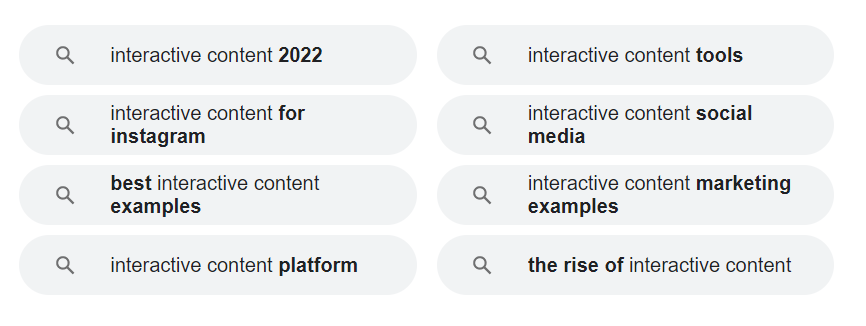
Because you sourced these titles through Google, you can assume these new titles are SEO-friendly and you know the topics will be relevant to your audience.
11. Comment Sections
Customer comments can be seen on your company website, blogs, and some other industry publication sites.
The customers that leave comments are your target readers, so take note of what they’re saying for new content ideas and inspiration.
It’s important to review all your comments, even if you’re not trying to come up with new ideas.
People often ask questions in the comments section, and those questions could be used as titles for a new topic.
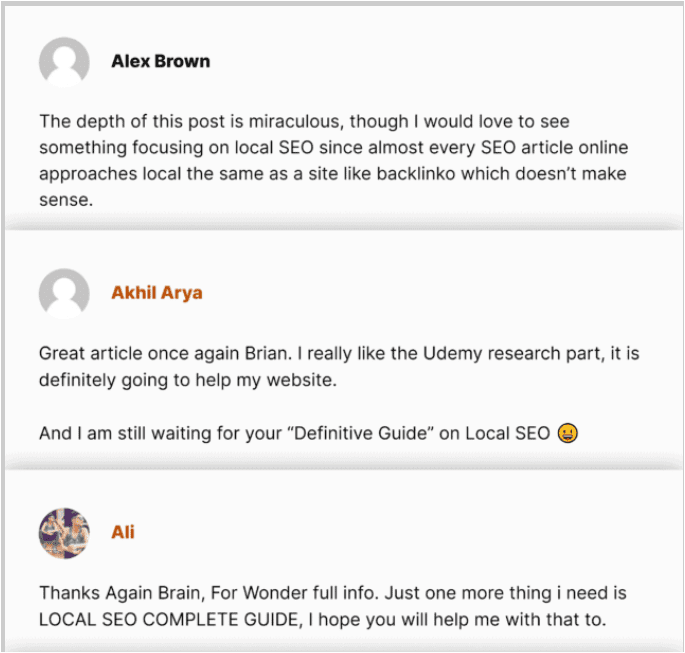
12. 404 Error Pages
When a user attempts to access an unavailable webpage, a 404 page is displayed and no one likes it! It can lead to a bad experience for visitors to a website.
But what if we tell you that you can use these 404 error pages to create new ideas, attract customers, and boost engagement? In fact, we have not one but 11 fantastic ways to convert your 404 pages into an asset.
For example, we created this 404 page by embedding a recommendation quiz on it. Our objective was to suggest popular pages to visitors and hence, understand what they’d like to read up on.
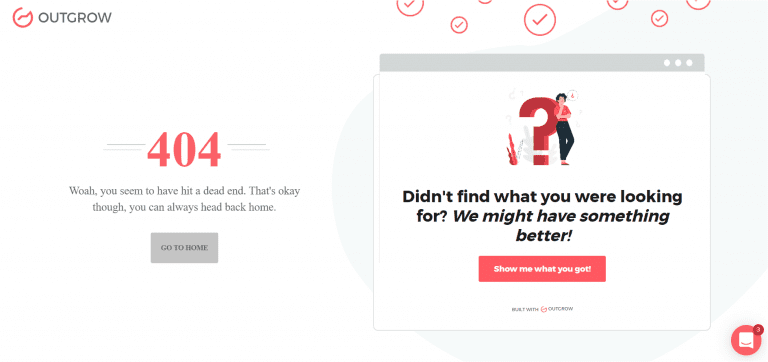
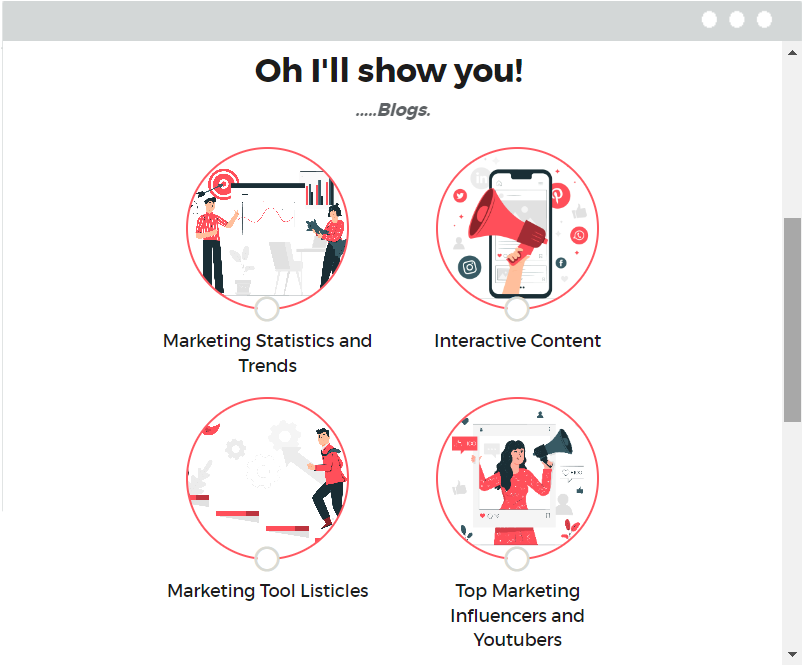
Similarly, you can use different interactive content types on your 404 pages to ask your audience what they’d like to see.
Before We Go!
Are you already buzzing with tons of new ideas for your blog? Well, do try these ways to find content ideas for your marketing strategy, and let us know how they work for you. If you have any sources that we missed out on, we’d love to hear from you! You know where to find us. Sign up for Outgrow’s 7 days free trial today and try different interactive content tools like quizzes, calculators, polls, and surveys for creating your own new creative content ideas!





![What Is Interactive Marketing? [Types & Examples]](https://outgrow.co/blog/wp-content/uploads/2022/06/What-Is-Interactive-Marketing-Types-Examples-768x432.jpg)